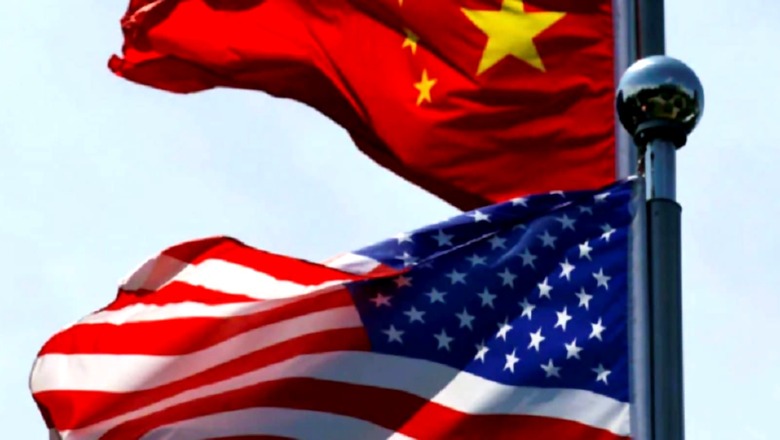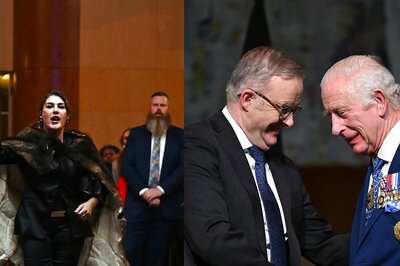
views
The economic Cold War between the United States and China unleashed by former President Donald Trump is not over yet. Expectations in the US business community and the Chinese government that the victory of Joseph Biden in the 2020 presidential election would restore normal ties between the two countries have remained unfulfilled to date.
However, despite retaliatory tariffs imposed on each other’s exports, the US-China trade over the years has expanded and the Chinese trade surplus vis-à-vis the United States has increased.
The US-China political confrontations over Chinese treatment of Uighur population in Xinjiang, destruction of democracy in Hong Kong, flexing of naval muscles by the PRC navy in the South China Sea and the East China Sea, Chinese strongman Xi Jinping’s threats to annex Taiwan by military force and range of other Chinese assertions have certainly soured the relationship between the United States and China.
President Biden, who derided Trump’s several foreign policy moves, has continued his predecessor’s China policy to a large extent and has often sounded tougher on China. When asked whether he would defend Taiwan if China attacked it, he promptly said it was an American commitment. None of his predecessors has so openly and clearly said so. It is a different matter that the White House officials quickly stated that the US policy on Taiwan has not changed.
When a seasoned politician with decades of experience in the Senate Foreign Relations Committee makes a statement in his capacity as the country’s President, it is not an off-the-cuff remark. Such a remark actually strengthened the traditional Taiwan policy of the US — “strategic ambiguity”.
However, President Biden knows well that there cannot be erstwhile Cold War-type relations with China. Unlike the US-USSR relations, US-China economic interdependence is too deep and intense to allow the two countries to pursue traditional Cold War strategies.
Precisely because of this reason, Washington and Beijing have begun to signal their mutual efforts to resolve economic differences and restore trade ties. In fact, it was the Trump Administration, which signed a Phase 1 trade deal with China in January 2020, years after the mutual tariff war. While China promised to buy $200 billion worth of American goods, the US expressed willingness to reduce high tariffs on imported Chinese goods.
The Biden Administration, despite acute differences over political and security issues with China, has also taken a step recently resulting in a recent virtual meeting between US Trade Representative Katherine Tai and Chinese Vice Premier Lin He. China as usual demanded the removal of tariffs imposed by the Trump Administration and the US asked China to abide by the trade commitments it made in the Phase 1 deal.
These are relatively low-level interactions that would not have mattered much but for the reported upcoming virtual summit between Joe Biden and Chinese President Xi Jinping. While the global headlines these days indicate a new Sino-US Cold War unfolding, Washington and Beijing have started a quiet process to resolve their trade and economic differences.
What may be the impact of such developments on India and on India’s evolving ties with the United States? First of all, it is important to realise that despite Chinese aggression along the Line of Actual Control (LAC) since mid-2020 and strong Indian responses to Chinese moves, including banning of more than 200 Chinese apps, India-China trade has been moving on a positive trajectory.
It is a clear signal that both the United States and India refrained from ending economic ties with China notwithstanding very serious confrontations in other sectors of the relationship. It also indicates the desirability of taking advantage of opportunities China offers, while seeking to prevent Chinese hegemony that would not be in the interest of any country.
The recent Chinese misadventures, assertions and aggressions have begun to face international resistance. That India, Japan, Australia and the US have formed a Quad forum, that India, Japan and Australia have agreed to establish alternative supply lines for uninterrupted trade in the Indo-Pacific, that Australia, UK and the US have formed AUKUS triangle for strategic collaborations, that tiny Taiwan has resolved to fight back any Chinese invasion, that the European Union has told Taiwan that “it is not alone”, that the NATO has been able to shift focus on China from Russia, that the ASEAN and the EU have developed their own strategies on the Indo-Pacific contrary to Chinese unwillingness to accept the Indo-Pacific construct are but a few pointers that China will not be allowed to have an unhindered march towards establishing a Sino-centric order in the region.
Significantly, China’s internal developments in recent times also point towards the beginning of the end of the Chinese economic miracle, the untrue discourse of “peaceful rise of China”, and China’s attempts to re-write the rules of international relations. China’s international image has got a severe beating due to its secrecy over the Wuhan virus, its human rights violations in Xinjiang, and political and civil rights violations in Hong Kong.
China today houses a large number of ghost towns, its real estate meltdown is exemplified by Evergande and other major real estate companies defaulting in the loan repayments, its economic owes resulting from a large number of state-owned companies defaulting in the like manner, big multinational companies closing shops and either shifting their production facilities to Vietnam and India and other countries or going back to Japan, South Korea, the US and other destinations. Interestingly more than 600,000 Chinese citizens have applied for asylums abroad to escape the over-centralisation of policies and lack of freedom.
China currently is facing massive internal challenges and the CCP under Xi Jinping’s leadership is trying to further strengthen party control over the social and economic lives of people. While seeking to reduce foreign cultural influences, it is also trying to alter its economic model by adopting a “dual circular” economy, meaning a consumer-driven model from earlier export-oriented economic models.
India can expect fierce competition between the US and China in coming years that would actually facilitate a multipolar Indo-Pacific order. As the heated Chinese economy cools, India has all the potential to attract foreign investments and leverage it to achieve “aatmanirbhar” goal.
The real challenge for India will be foreign misadventure by the Chinese government to invoke nationalism at home and hide its domestic failures. Thus the current policy of defence modernisation, and enhancing Indo-US strategic partnership bilaterally and multilaterally should be the preferred goal.
The writer is Professor, Jawaharlal Nehru University. The views expressed in this article are those of the author and do not represent the stand of this publication.
Read all the Latest Opinions here




















Comments
0 comment